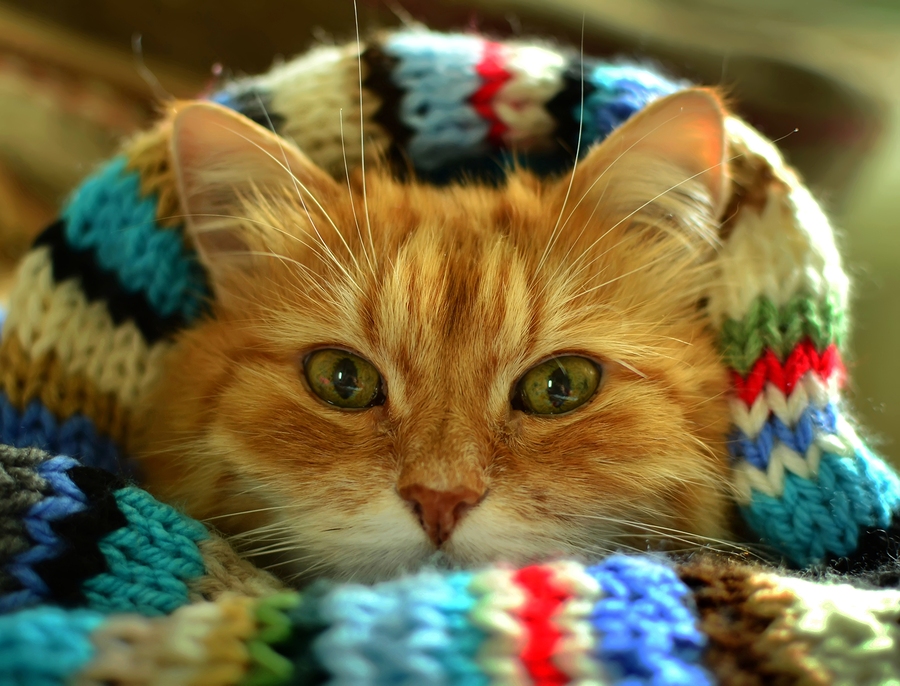As a veterinarian, I was taught early on that while declawing cats wasn’t without its drawbacks, it was a valuable tool in preserving the human-cat bond, and kept cats out of shelters. I no longer believe that today.
As I’ve learned more about the negative effects of pain and fear on our companion animals, I’ve become a firm opponent of surgical declawing — and like the AVMA, a believer that we should call it by its correct name: amputation.
I’ve also learned that the pain caused by this procedure often lasts long after the surgery is over. It can last the life of the cat, and even cause worse behavior problems than the one it supposedly set out to solve, destructive scratching, such as litter box avoidance and biting. After all, declawed cats come into animal shelters all the time, and are also trapped in feral cat colonies. I think we as veterinarians have fallen back on the “keeping them in their homes” rationalization for far too long.
To understand the issue of chronic post-declaw pain in cats, I turned to my personal veterinary pain guru, Dr. Robin Downing of the Downing Center for Animal Pain Management in Windsor, Colo.
Dr. Downing has a string of credentials longer than the driveway leading up to our Almost Heaven Ranch (and definitely long enough to give this veterinarian an inferiority complex), including:
- Diplomate, American Academy of Pain Management
- Diplomate, American College of Veterinary Sports Medicine and Rehabilitation
- Certified Veterinary Pain Practitioner
- Certified Canine Rehabilitation Practitioner
- Certified Pain Educator, American Society of Pain Educators
My first question for Dr. Downing was to confirm whether what my clinical experience has shown me, that some cats, perhaps many, develop persistent pain after being declawed, was accurate.
“Cats most definitely can suffer pain after having their toes amputated — the appropriate description for the procedure,” she told me. “Unfortunately, as the latest survey conducted by DVM360 revealed, a huge percent of cats do not receive appropriate post-operative pain management.
“If post-op pain is not managed aggressively and comprehensively, the pain can become chronic. Because the nerves to the toes are actually cut, the pain can become what in people is called ‘neuropathic’ pain. People with neuropathic pain report various sensations in the affected area of the body — they may feel tingling, burning, electrical pain, throbbing, and more.”
This happens, she said, because the nerves are actually cut during the surgery, which damages them. “With nerve damage, there are changes that occur in the transmission of signals along the nerve fibers,” she explained. “The damaged nerves can set up a pain syndrome that is self-perpetuating. This means that the toes can become hypersensitive, or may even develop the sensations that humans with neuropathic pain experience.”
I’ve seen many declawed cats in my years as a veterinarian, and expect to continue seeing them, so I asked Dr. Downing what signs might suggest to an owner or veterinarian that an already-declawed cat is suffering from a post-declaw pain syndrome.
It depends on the cat, she told me. “Some cats with neuropathic toe/foot pain limp all the time,” she said. “Some cats limp when they walk on some surfaces but not on others. I knew a cat who only limped on tile floors, never on carpet. Another cat would only limp on carpet, yet not on smooth floor surfaces. It is impossible to predict the outcome.”
One of the most interesting things Dr. Downing has observed in working with these cats is that when their feet and toes are touched and manipulated, they don’t object. That’s because, she said, this pain can be presumed to be neuropathic in origin — in other words, nerve pain. Given that, I asked her, what should owners of already-declawed cats do if they suspect or discover their cat suffers from this condition. Is there any hope?
“Absolutely! Because this pain is neuropathic in nature, gabapentin is the treatment of choice,” she said. “Gabapentin targets a receptor in the spinal cord that helps to modulate peripheral pain.
“Non-steroidal anti-inflammatory drugs (NSAIDs) are useless against this type of pain, as there is no inflammation involved. Gabapentin is a true game-changer for these cats, restoring them to normal life. It is possible that gabapentin may have to be given for the rest of the cat’s life, but every cat is different.”
I know many veterinarians believe as I used to, that this procedure has its place. But I took an oath to prevent and relieve animal suffering, so today I work with clients to train their kittens and newly-adopted adult cats to only scratch on appropriate surfaces, and use deterrents such as sticky tape on the side of the sofa or soft claw-covers that need to be replaced every 4-6 weeks for the few more serious cases.
And to my fellow veterinarians who feel they won’t have tools to help people struggling with destructive scratching if this surgery is taken off the table, I say: Stop selling yourselves short!
As a recent study in the Journal of Veterinary Behavior showed, the greatest power we as veterinarians have to help cats and humans live together in peace is to provide our clients with reliable, informed behavior advice — and for them to follow it!
We can help both cats and their humans by offering them expert advice that will cement a lasting, beneficial bond among pet, owner, and veterinarian. Isn’t that better than risking lifelong pain or behavior problems in our patients?
So let’s embrace this new wave of concern over the practice of declawing. Just as our profession once held a belief that animals don’t feel pain, and more recently thought it was acceptable to leave animals in pain if we needed to keep them quiet, let’s put this one into the history books where it belongs!


